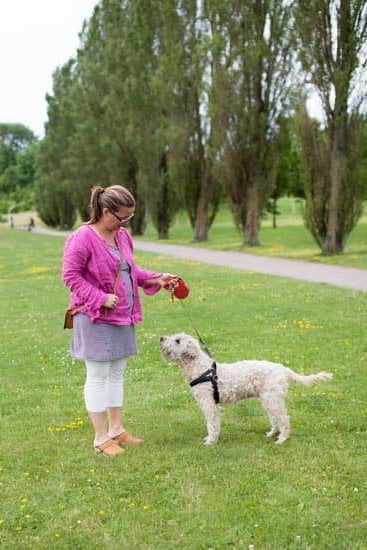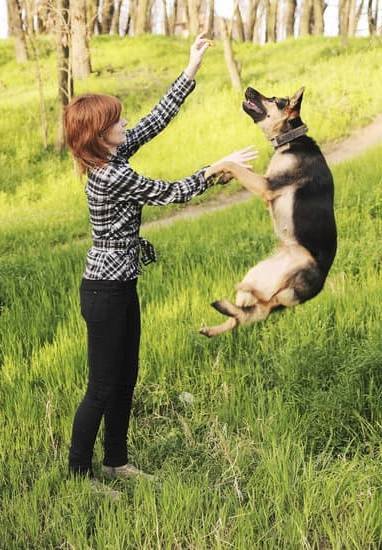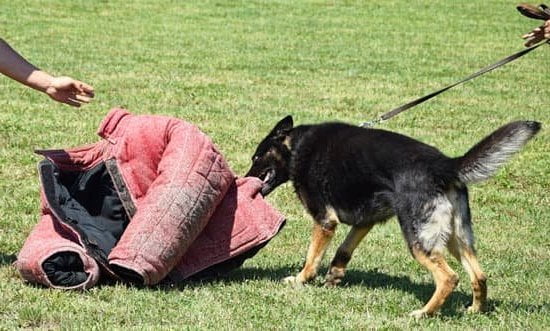Kennel training is an essential skill that can benefit dogs of all ages, including older canines. In this article, we will explore the process of how to kennel train an older dog, focusing on the unique considerations and approaches needed for senior pups.
While it may seem daunting to embark on kennel training with an older dog, the benefits are numerous. From providing a safe haven for your furry friend to aiding in house training and behavior management, kennel training can significantly enhance your dog’s well-being and quality of life.
When it comes to kennel training an older dog, one must first assess their temperament and behavior to tailor the training process accordingly. Understanding your dog’s comfort level with confinement and their ability to adapt to new routines will guide you in creating a positive kennel training experience.
Additionally, selecting the right kennel size and type is crucial for ensuring your older dog feels secure and comfortable in their new space. By considering factors such as mobility issues or anxiety levels, you can choose a kennel that meets your dog’s specific needs.
Creating a welcoming environment within the kennel is key to encouraging your older dog to view it as a safe retreat rather than a punishment. Incorporating familiar bedding, toys, and treats can help make the space inviting and appealing for your furry companion.
Gradually introducing your older dog to the kennel with positive reinforcement techniques will further reinforce a sense of security and comfort. By following these steps, you can establish a successful kennel training routine that promotes trust and relaxation for your beloved senior pet.
Assessing Your Older Dog’s Temperament and Behavior for Kennel Training
When it comes to kennel training an older dog, understanding their temperament and behavior is crucial for a successful training process. Each dog is unique, and assessing your older dog’s personality will help you tailor the training to their specific needs. Start by observing how your older dog reacts to new experiences, confinement, and alone time. This will give you valuable insights into how they might respond to kennel training.
One important aspect to consider when assessing your older dog’s temperament is their past experiences with crates or kennels. If your older dog has had negative experiences in the past, they may have developed a fear or aversion to being confined.
In such cases, it is essential to approach kennel training with patience and positive reinforcement. On the other hand, if your older dog is comfortable with confinement or has been crate trained before, they may adapt more easily to kennel training.
Another factor to evaluate is your older dog’s behavior when left alone. Some dogs may experience separation anxiety or exhibit destructive behaviors when left unsupervised.
Kennel training can provide a safe and secure space for your older dog when you are not around, but it is important to address any underlying separation anxiety issues before starting the training process. By taking the time to assess your older dog’s temperament and behavior, you can create a customized kennel training plan that sets them up for success.
| Aspect | Consideration |
|---|---|
| Past Experiences | Positive vs negative associations with crates/kennels |
| Separation Anxiety | Behavior patterns when left alone |
| Comfort Level | Reaction to new experiences and confinement |
Choosing the Right Kennel Size and Type for Your Older Dog
When it comes to kennel training an older dog, one of the most important factors to consider is choosing the right kennel size and type. The kennel should provide enough space for your older dog to stand up, turn around, and lie down comfortably. It’s essential to ensure that your dog feels safe and secure in their kennel, so selecting the appropriate size is crucial for their overall well-being during the training process.
Assessing Your Older Dog’s Needs
Before investing in a kennel for your older dog, take some time to assess their needs and preferences. Consider factors such as their size, breed, and age when choosing a kennel size. Some older dogs may prefer a more enclosed space for added security, while others may feel more comfortable in a larger, open kennel. It’s also essential to consider any mobility issues your older dog may have and select a kennel that is easily accessible for them.
Types of Kennels
There are several types of kennels available on the market, ranging from wire crates and plastic carriers to soft-sided fabric crates. Each type has its own benefits and drawbacks, so it’s crucial to choose one that best suits your older dog’s needs. Wire crates allow for better ventilation and visibility but may not offer as much privacy or security.
Plastic carriers provide a more den-like environment that can help make your older dog feel safer. Soft-sided fabric crates are lightweight and portable but may not be as durable as other types of kennels.
By carefully assessing your older dog’s needs and selecting the right size and type of kennel, you can set them up for success in their kennel training journey. Providing a comfortable and inviting space where they feel safe will help ease their transition into using the crate regularly. Remember to introduce them gradually and positively to their new living space to ensure a smooth training process.
Creating a Comfortable and Inviting Kennel Space for Your Older Dog
As you begin the process of kennel training your older dog, it’s important to create a comfortable and inviting space for them to feel safe and secure in. Here are some tips on how to set up the perfect environment for your furry friend:
- Choose a cozy bed or blanket: Select a soft and comfortable bed or blanket for your older dog to lie on inside the kennel. This will help them feel at ease and provide a warm place to rest.
- Include familiar toys or items: Place some of your dog’s favorite toys or belongings inside the kennel to make it feel like a familiar space. This can help reduce anxiety and make them more comfortable with the new environment.
- Ensure proper ventilation and temperature control: Make sure the kennel is well-ventilated and at a comfortable temperature for your older dog. You want them to feel relaxed and not too hot or too cold while inside their space.
Creating a peaceful and soothing atmosphere within the kennel can greatly enhance the training process for your older dog. Remember, it’s essential to make this space appealing and comforting, so they associate positive feelings with being inside.
Introducing Your Older Dog to the Kennel Gradually and Positively
When introducing your older dog to their new kennel, it’s crucial to take things slow and use positive reinforcement techniques. Here are some steps you can follow to help acclimate your furry companion to their new space:
- Begin by leaving the kennel door open so that your dog can explore it freely without feeling trapped.
- Encourage your dog to enter the kennel on their own by placing treats or toys inside as an incentive.
- Once they start going in voluntarily, praise them with positive reinforcement such as verbal cues or petting.
By gradually introducing your older dog to the kennel in a positive way, you can help build their confidence and comfort level with this new environment. Remember, patience is key when it comes to training an older dog, so take it one step at a time.
Introducing Your Older Dog to the Kennel Gradually and Positively
As you begin the process of kennel training your older dog, it is important to introduce them to their new space gradually and positively. This will help them associate the kennel with safety and comfort, making the training process much smoother. Here are some steps on how to properly introduce your older dog to the kennel:
- Start by placing treats or toys that your older dog loves inside the kennel. Allow them to explore the space at their own pace without any pressure. This will help create a positive association with the kennel from the beginning.
- Encourage your older dog to spend short periods of time in the kennel with the door open. Reward them for going inside voluntarily and show them that it is a safe and inviting space. Gradually increase the amount of time they spend inside while keeping it a positive experience.
- Once your older dog is comfortable spending time in the kennel with the door open, start closing the door for short periods while they are inside. Stay close by and offer reassurance and treats to help them feel secure. Slowly increase the length of time with the door closed as your older dog becomes more accustomed to being confined.
By following these steps and introducing your older dog to their kennel gradually and positively, you can help them adjust to their new environment with ease. Remember to be patient and consistent throughout this process, as every older dog has different needs and timelines for adapting to kennel training.
Establishing a Kennel Training Routine and Schedule for Your Older Dog
Establishing a consistent routine and schedule is crucial when it comes to kennel training an older dog. Older dogs, like humans, thrive on routine and predictability, so setting a clear schedule for their kennel training can help them adapt more easily. Start by establishing set times for feeding, potty breaks, exercise, and kennel time. This will help your older dog anticipate what’s coming next and feel more secure in their training process.
When creating a kennel training routine for your older dog, be sure to include plenty of positive reinforcement and rewards. Older dogs may take longer to adjust to new routines, so it’s important to make the experience as pleasant as possible for them. Use treats, toys, praise, and affection to encourage your older dog to enter their kennel willingly and stay calm while inside. Consistency is key here – always reward good behavior and ignore or redirect negative behavior.
In addition to a daily routine, it’s also important to establish a regular schedule for gradually increasing the amount of time your older dog spends in their kennel. Start with short intervals of 5-10 minutes and slowly increase the duration over time.
Be patient with your older dog as they learn to be comfortable in their kennel – rushing the process can lead to anxiety and resistance. By following a consistent routine and schedule with patience and positivity, you can effectively kennel train your older dog and provide them with a safe and comfortable space of their own.
Handling Common Challenges and Setbacks in Kennel Training Older Dogs
Patience and Persistence
When it comes to kennel training older dogs, it’s important to remember that patience and persistence are key. Just like humans, dogs can take time to adjust to new routines or environments. If your older dog is showing resistance or reluctance towards the kennel, don’t get discouraged. Stay consistent in your training efforts and provide positive reinforcement whenever your dog shows signs of progress.
Separation Anxiety
One common challenge in kennel training older dogs is dealing with separation anxiety. Older dogs may be more attached to their owners and may feel anxious when left alone in the kennel. To address this issue, start by gradually increasing the amount of time your dog spends in the kennel while you are at home. This will help them get used to being confined in a positive way before you leave them alone for longer periods of time.
Accidents and Messes
Accidents and messes inside the kennel can also be a setback in the training process. Older dogs may have less control over their bladder or bowel movements, especially if they have health issues such as arthritis or incontinence. Make sure to take your older dog outside regularly for potty breaks and clean up any accidents immediately with an enzyme-based cleaner to remove odors. Additionally, consider using washable or disposable pads inside the kennel for added protection against messes.
Celebrating Successes and Milestones in Your Older Dog’s Kennel Training Journey
As you continue with the kennel training process for your older dog, it is important to celebrate the successes and milestones that you achieve together. Positive reinforcement plays a crucial role in reinforcing good behavior and creating a positive association with the kennel. Whenever your older dog willingly enters the kennel, stays calm inside, or shows signs of comfort while in the space, make sure to praise and reward them.
Tracking your dog’s progress through a journal or a log can be a helpful way to celebrate milestones in their kennel training journey. Note down when they show improvements in staying inside the kennel for longer periods, when they no longer resist entering the space, or when they voluntarily go into the kennel on their own.
This will not only help you keep track of their progress but also give you a sense of accomplishment as you see how far your older dog has come.
In addition to verbal praise and treats, consider incorporating small celebrations for significant achievements in your older dog’s kennel training. Whether it’s giving them their favorite toy or taking them out for a special walk after successful kennel time, these rewards can further motivate and encourage your furry friend.
Remember that patience and consistency are key when celebrating successes and milestones in how to kennel train an older dog journey. By staying positive and supportive throughout this process, you can make it a rewarding experience for both you and your beloved pet.
| Celebrating Successes | Milestones Achieved |
|---|---|
| Verbal praise | Longer periods inside the kennel |
| Treats | Willingly entering the kennel |
| Favorite toy | Voluntarily going into the kennel on their own |
Conclusion
Kennel training an older dog can seem like a daunting task, but the benefits far outweigh any initial challenges. By understanding your dog’s temperament and behavior, choosing the right kennel size and type, creating a comfortable space, and introducing them gradually, you can help your older furry friend adjust to their new environment.
Throughout the training process, it is essential to establish a routine and schedule to ensure consistency and make your older dog feel secure in their kennel. Patience and positive reinforcement are key as you navigate any setbacks or challenges that may arise. Remember that every dog is unique, and progress may take time.
As you celebrate the successes and milestones in your older dog’s kennel training journey, take a moment to reflect on the positive impact it has had on their well-being. Kennel training provides a safe space for your older dog to relax, unwind, and feel secure.
It can also help with separation anxiety or behavioral issues. Ultimately, by investing time and effort into how to kennel train an older dog properly, you are promoting their overall happiness and quality of life.
Frequently Asked Questions
Can an Older Dog Be Crate Trained?
Yes, an older dog can definitely be crate trained. It may take more time and patience compared to a younger dog, but with consistency and positive reinforcement, even senior dogs can learn to feel comfortable and safe in their crates.
What Age Is Too Late to Crate Train a Dog?
There isn’t a specific age that is considered “too late” to crate train a dog. While it may be more challenging to crate train an elderly dog who has never been exposed to it before, it is still possible with the right approach and understanding of the individual dog’s needs and behaviors.
How Do I Get My Older Dog to Sleep in His Crate?
To help your older dog sleep in his crate, first make sure the crate is comfortable and inviting with a soft bed or blanket inside. Gradually acclimate your dog to the crate by associating positive experiences with it, such as feeding meals or giving treats inside the crate.
You can also try placing familiar items with your scent in the crate to make it feel more like home for your dog. Additionally, establishing a bedtime routine that includes calming activities before crating your dog for sleep can help him relax and settle down easier in his crate.

Welcome to the blog! I am a professional dog trainer and have been working with dogs for many years. In this blog, I will be discussing various topics related to dog training, including tips, tricks, and advice. I hope you find this information helpful and informative. Thanks for reading!





